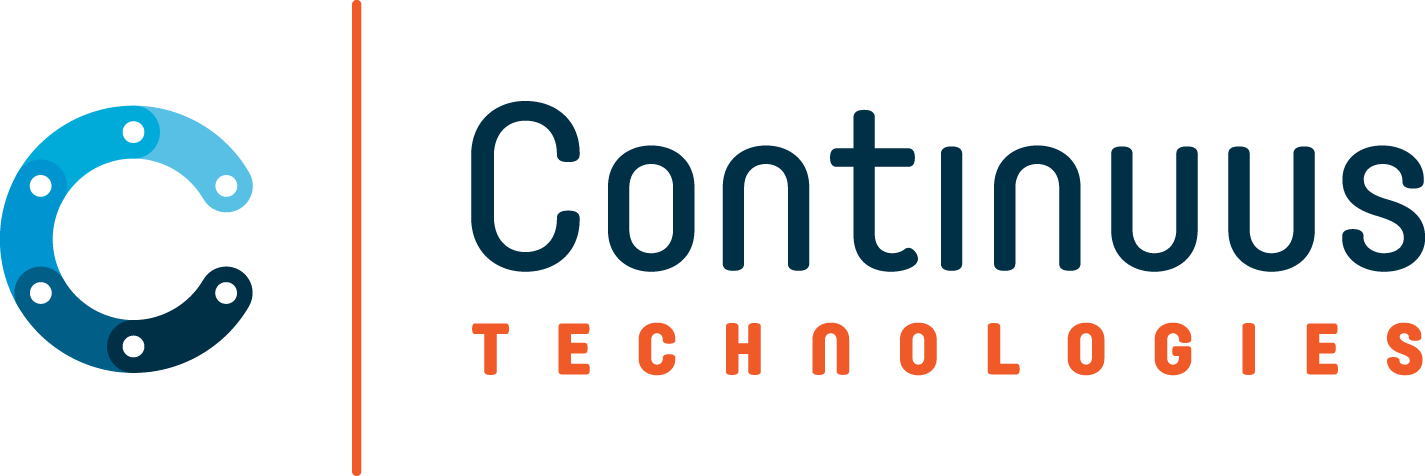Today is National Clean Your Virtual Desktop Day, so let’s talk about cleaning up, organizing, and maintaining your digital workspace.
I frequently volunteer for tasks that involve organizing things at Continuus, whether that be our server folder hierarchy, the swag closet at our office, or even helping some of my coworkers organize their files and to-do lists. Organization is something I’m fairly passionate about, so I thought it would be fun to share some of the knowledge I have picked up over time.
Why should you organize your digital workspace?
Disorganization brings stress, whether you realize and acknowledge it or not, and clearing up the clutter will help you relax as you go about your day-to-day tasks. Keeping an organized digital workspace will also help cut out distraction. If you’re searching high and low to find a certain file you need for a project in a sea of files, it’s easy to interrupt your focus with something else you find in the process. With a little organization, you’ll be able to navigate directly to the file you need and breeze past all of the distractions.
In summary, organizing your computer will help you stay focused, efficient, and relaxed as you go through your workday. When your environment, both physical and digital, is neat and tidy, your thoughts will follow suit.
Organization isn't a one-size-fits-all solution
Everyone has their own way of doing things and organization is no exception. I’ve been working and reworking my desktop and cloud folder hierarchy for years, and what works for me probably won’t work for you. However, there are some standard steps you can take to get started.
Steps to start your virtual desktop organization
1. DOWNLOADS FOLDER
Get rid of items in your Downloads folder that you no longer need. If you come across things you DO need, move them to your desktop. Do this once a week going forward – it’ll be more manageable than trying to do it once a year or even every few months.
2. DUPLICATE FILES
There are apps you can use to help with this, but they typically have a cost attached to them, so I prefer to do this manually. Go to your “All Files” list, sort it alphabetically, and move duplicates to the Trash. Clear that Trash once a week (or once a month if you’re worried about throwing away something you might need).
3. ARCHIVE ITEMS IN THE CLOUD
Not all items you aren’t using should be moved to the Trash. I have a Google Drive folder that I use specifically for work-related items that I don’t actively use but still want around in case a need comes up in the future. I archive things like working files, meeting notes, event graphics, etc. Saving these things to the cloud frees up space on your computer and will keep it running smoothly. Some great free options that have low cost options for additional storage include Google Drive, Dropbox, and Microsoft OneDrive.
4. UNUSED APPLICATIONS
Go through your applications list and get rid of ones you no longer need or use. This includes past versions of platforms; for example, if you have Photoshop 2021 installed, you no longer need Photoshop 2020.
5. FOLDER HIERARCHY
This is the tricky part. The goal is to have a handful of main folders with subfolders within those. It takes a lot of trial and error to get this just right, and everyone will have different methods. As an example, my main Marketing folder organization looks something like this, with subfolders breaking down each topic accordingly:
- Admin and Documentation
- Articles and eBooks
- Blog and Vlog Content
- Brand Handbook and Logos
- Email Campaigns
- Employee Assets
- Events
- Marketing Reports and Analytics
- Partners and Vendors
- PR and Awards
- Social Media Assets
- Website
6.FILE AMING CONVENTIONS
A good habit to get into is using a standard naming convention for your files. You may have heard us talk about this when it comes to keeping your data clean for your organization, but it also will make a big difference for your personal organization.
Again, there’s no right way to do this, but one thing I have found to be helpful is to put the date that the file was created in the name. That way, if there are modifications made to a file or you move it to your organization’s server, the original created date is obvious to anyone who views it. I like to include the date at the end of every file name in the format _YYMMDD.
So, for example, if I created this blog post document today, I might name it Blog - Organizing Your Digital Workspace_201117.
7. DESKTOP FILES
Once you have sifted through your Downloads and your folder hierarchy set up, start moving your Desktop files to their newly designated location. That may be somewhere in your folder hierarchy, your cloud archive, or the Trash.
8. WEB BOOKMARKS
Go through your Bookmark list once a week to ensure any resources you saved don’t get forgotten or lost in a never-ending list of Bookmark items.
9. ESTABLISH A REGULAR CLEAN-UP CADENCE
Organizing anything is daunting when you try to do it all at once – your closet, your kitchen cabinets, your garage – and your digital workspace will feel the same. The best thing to do (in any of those situations) is chip away at it little by little and then stay on top of it on a regular basis to maintain.
Once a week, I put it on my to-do list and block off some time on my calendar to clean up my desktop and go through my Bookmarks list on my internet browser. This usually only takes about 10 minutes to do, but those small tasks are the ones that tend to get pushed to the backburner. I also clear my Downloads list and Trash from the week to free up some space. I usually do all of this on Friday afternoons when I am ready to close up shop for the weekend. This way, I can go into the weekend with a clean slate and start my Monday morning to-do list feeling focused and ready to tackle the new week.
Happy organizing!




